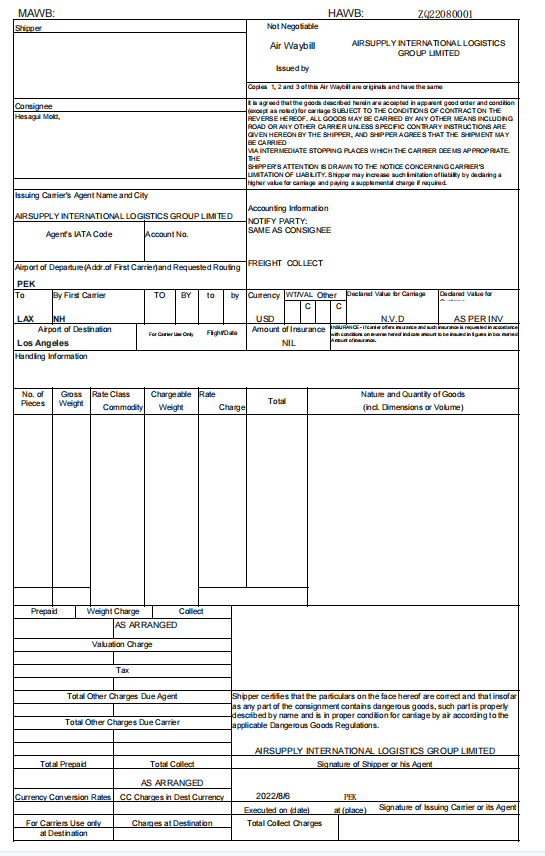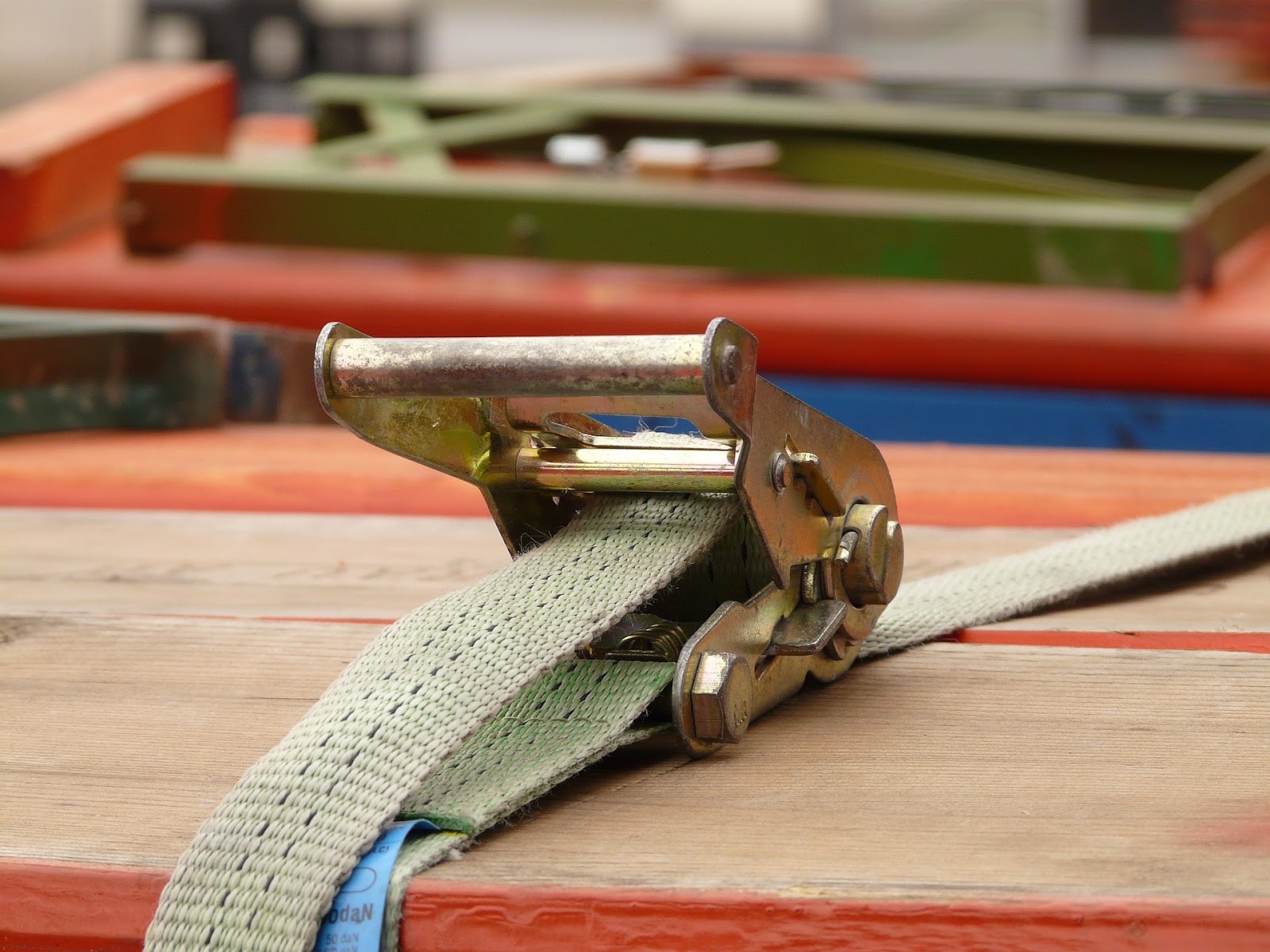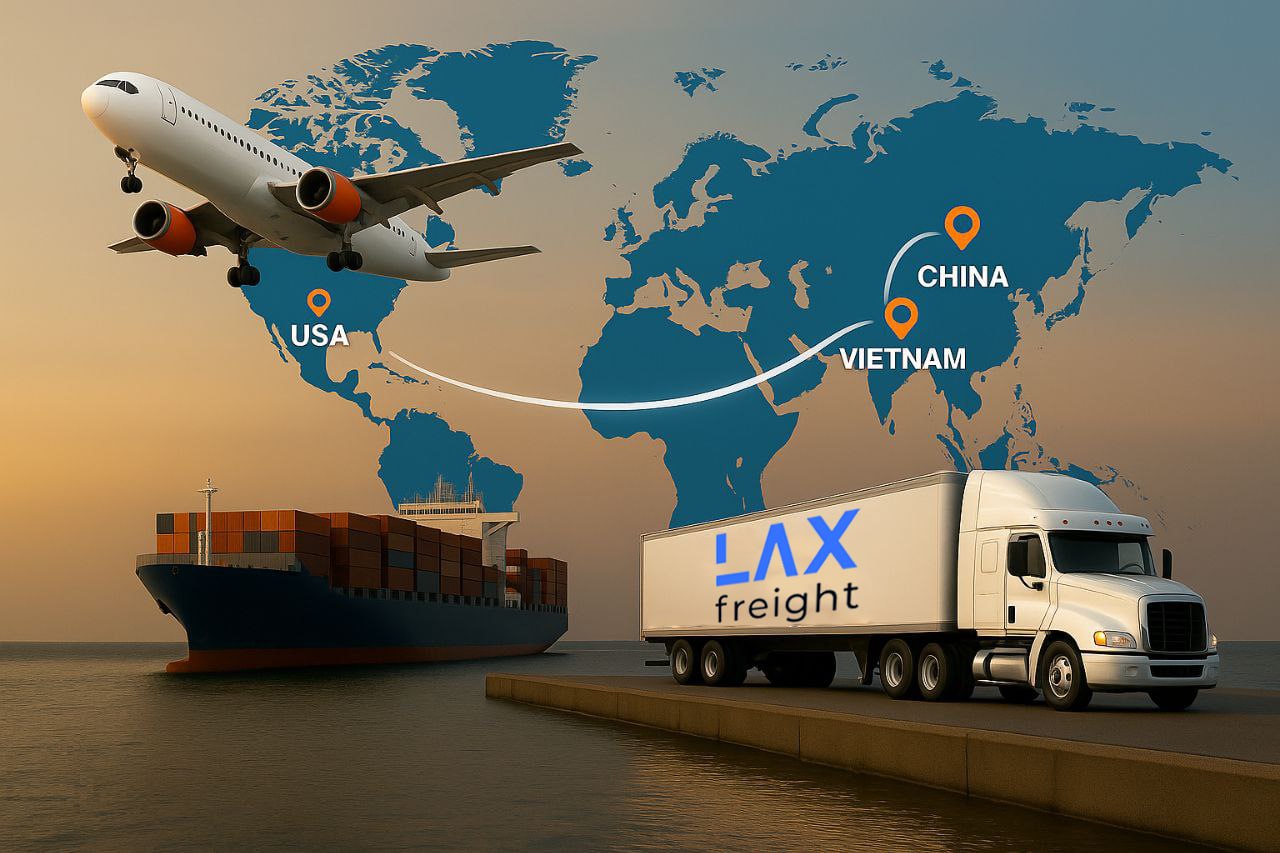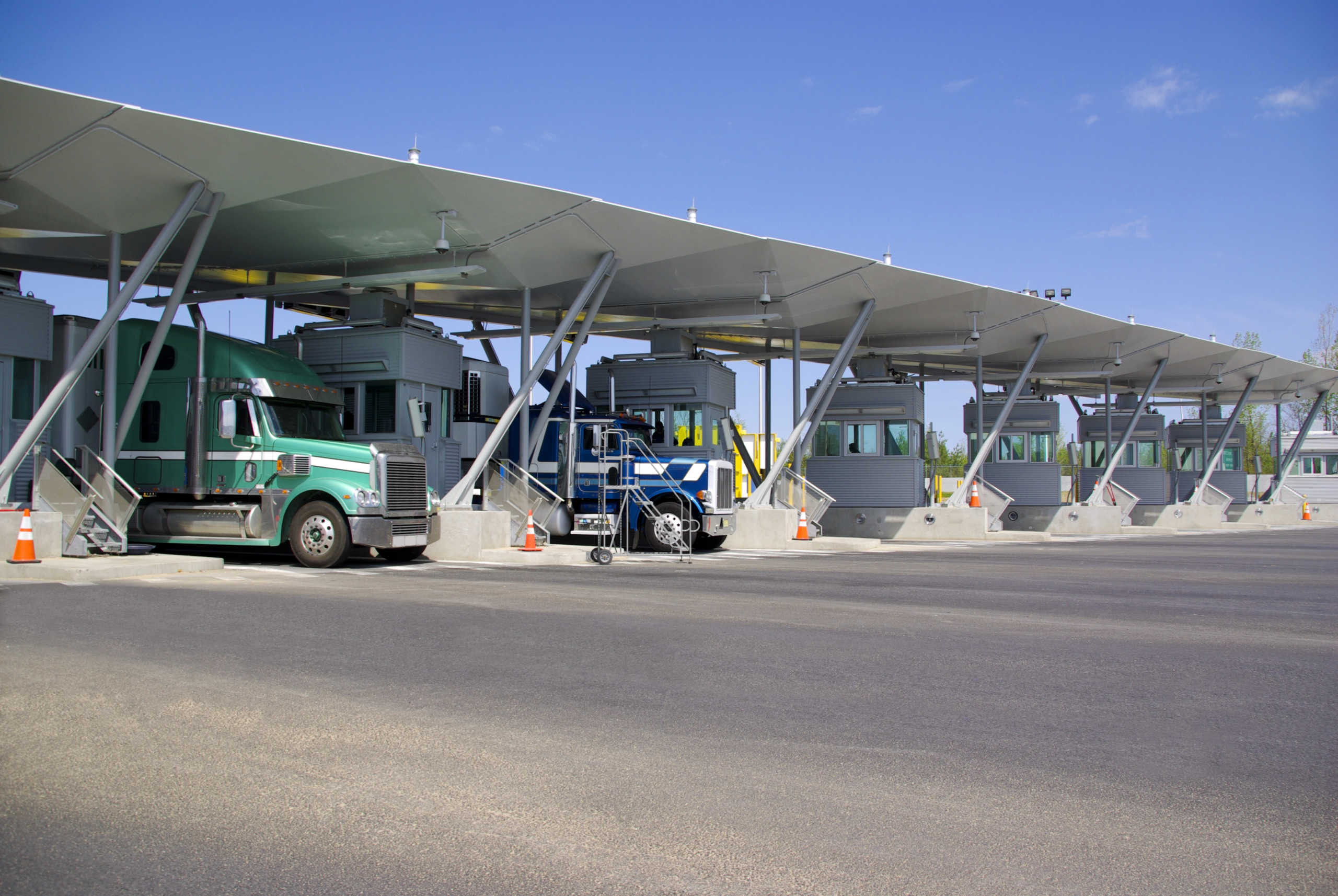The Air Waybill is a main document of the air shipping that ensures the efficient and timely delivery. It serves as a contract of carriage and receipt of goods, providing cargo tracking, customs clearance, and legal compliance.
The article includes the review of the document’s critical aspects, its functions and requirements, and an airway bill example. It helps you to obtain a better understanding of this document.
What is an Air Waybill (AWB)?
Firstly, the Air Waybill is a contract of carriage between the shipper and the carrier that accompanies the whole delivery process. It provides details about the goods and simplifies transportation and requirements compliance. The AWB also functions as a receipt issued by the airline to the shipper, confirming the cargo receiving and transportation according to the agreed terms.
This document serves several functions in the logistics chain. In addition to contract and receipt functions, it is also a tracking tool that enables monitoring of the shipment’s progress.
Air Waybill vs. Bill of Lading
These documents are essential agreements in the logistics sector. The main difference is that they are used for different purposes and transport modes. Understanding the similarities and differences is essential for effective logistics process management.
Let’s review the similarities. Both documents serve as a contract between the shipper and the carrier and set the terms and conditions of transportation. They include main cargo information, such as the goods description, quantity, weight, and dimensions. For more information on the BOL, visit What Is a Bill of Lading? Key Insights and Examples.
In addition, both documents are the receipt of goods issued by the carrier. It provides an acknowledgment that the goods are received and ready for further transportation.
These functions facilitate customs procedures and provide necessary information to customs authorities. The AWB and the BOL also outline the carrier’s liability in case of loss, damage, or delay.
Aspect | Air Waybill | Bill of Lading |
|---|---|---|
| Mode of transport | Air | Sea and land |
| Function | Contract of carriage and receipt | Contract of carriage, receipt, and document of title |
| Negotiability | Non-negotiable | Negotiable |
| Issuance | Issued by the airline | Issued by the carrier or shipping company |
| Tracking | Includes tracking number to monitor shipment | May include tracking information, still less standardized |
| Customs clearance | Facilitates customs procedures for air freight | Facilitates customs procedures for sea and land freight |
| Ownership transferability | Non-transferable | Can be transferred by endorsement |
Requirements for an Air Waybill
For validity and effectiveness, the Air Waybill must meet specific requirements. They are projected to provide clear, accurate, and detailed information for smooth cargo movement.
- Compliance with international standards. The AWB must adhere to the standards set by the International Air Transport Association (IATA). These rules include specific formatting, terminology, and data requirements. IATA’s guidelines ensure that information in the Air Waybill includes all necessary details to simplify international shipping and custom procedures, reduce errors risk, and ensure efficient processing.
- Accurate information. Discrepancies or omission can lead to delays, additional costs, or legal issues. The parties involved in the shipping process must review and verify the information on the AWB. It includes the shipper and the consignee data, flight details, and the cargo description.
- Legibility and language. The AWB must be legible and written in any widely accepted language, such as English. It prevents misinterpretations and ensures easy understanding of the information.
- Unique AWB number. The airline assigns each document a unique number. This number tracks the shipment during delivery and ensures its arrival at the final destination.
- Proper endorsement and authentication. The Air Waybill should be endorsed and authenticated by the relevant parties. This includes the signatures of the shipper, the authorized party, and the carrier. Their endorsement acknowledges the carriage terms and conditions and the receipt of the goods.
- Handling instructions and requirements. Special instruction on goods handling and shipping. It may include temperature control for perishable goods or precautions for hazardous materials.
- Freight charges and terms. The AWB should clearly set freight charges and payment terms. Such transparency helps in disputes reducing and ensures the parties’ awareness of their financial obligations.
Elements of an Air Waybill
- Shipper and consignee information. It includes full names, addresses, and contact details. This information helps to identify the parties involved in the shipment.
- Air Waybill number. The individual number is critical for tracking the shipment to ensure the delivery.
- Departure and destination airports. It includes the data on the airports involved in the shipping process. For that, the IATA codes are often used.
- Flight information. Details about the flight, its number, and the departure date are also mentioned.
- Goods description. It includes the cargo type, quantity, weight, and special characteristics that affect handling.
- Packaging details. The AWB includes information about the package, its number, and their weight. Proper packaging ensures the needed safety of the cargo.
- Declared value that is set by the shipper. It determines liabilities of the carrier in case of loss, damage, or delay.
- Handling instructions. Any special requirements, such as temperature control or precautions, should be indicated in the document.
- Freight charges. The Air Waybill specifies the freight charges and payment terms.
- Signature and date. The parties of the supply process must sign the AWB to confirm the carriage terms and conditions.
- Route information. Details of the route, such as transit point, help plan the supply chain processes and ensure the correct delivery.
- Reference number. The AWB may include reference numbers, such as purchase orders or customer references, to facilitate tracking and coordination.
These essential elements provide a comprehensive shipment record, ensuring that all parties involved know the necessary information to manage and transport the cargo.
Functions of an Air Waybill
An Air Waybill handles several critical functions, guaranteeing efficient cargo movement and on-time delivery.
- Contract of carriage between the shipper and the carrier. It indicates the terms and conditions of the delivery and the responsibilities and liabilities of both parties.
- Receipt of goods that acknowledges the carrier’s possession of the cargo in excellent condition. It provides proof of the shipment being handed to the carrier.
- The freight bill includes details on the freight cost, handling fees, and other applicable charges. It provides the carrier with a clear understanding of the shipment’s financial aspects.
- Customs documentation is required for clearance at the origin and destination countries. The required information must include the shipper and the consignee details, the cargo description, and declared value.
- Tracking through the unique number that each AWB has. It enhances visibility and control over the transportation process.
- Handling instructions that inform carried and handling personnel about special requirements. It may include temperature control and hazardous materials handling.
- Evidence of contractual terms agreed between the parties. It provides a basis for disputes resolving that may occur in case of loss, damage, or delay.
- Legal evidence. The AWB provides documented proof of the agreed terms to resolve any disputes or claims.
- Record-keeping for a permanent record of the shipment details. The parties can use this for future references, audits, and compliance purposes.
How to Complete an AWB
Careful completion of the Air Waybill is crucial for efficient transportation. As we reviewed above, each section requires specific information and accuracy.
Enter the shipper’s data. The required information includes full name, address, and contact details for proper identification and communication.
- Include the consignee’s and the carrier’s information. It must include full name, address, and contact details.
- Ensure that the AWB has the correct number assigned by the airline. The carrier usually pre-prints this number on the form.
- Specify the airports of departure and destination using the IATA codes to avoid confusion.
- Enter the flight number and departure date. It helps schedule and track the shipment.
- Provide a detailed product description, such as quantity, weight, and unique characteristics.
- Determine the packages number and their type. This information helps the carrier manage the shipment according to requirements.
- State the declared value of the cargo to determine the carrier’s liabilities in case of loss or damage.
- Include any special handling instructions, such as temperature requirements or precautions.
- Specify the freight charges and indicate whether the shipment is prepaid or collected. This will help avoid any financial disputes.
- Make sure that the shipper and the carrier sign the documents.
- Provide routing details, including transit points or connecting flights. This information simplifies logistics planning and ensures efficient delivery.
- Include any additional reference numbers, such as order or customer reference numbers.
Airway Bill Example

Conclusion
The Air Waybill provides a comprehensive record of the air shipment process. Its functions include ensuring legal compliance and facilitating transportation and customs clearance, providing efficient cargo handling and transport. By understanding the meaning of the air waybill and how to complete the document, businesses can avoid common mistakes and ensure smooth cargo flow.
If you want to optimize your shipping process and ensure careful cargo handling, join LAX Freight! Our expertise in logistics solutions can help streamline the operations of the supply chain. Contact LAX Freight now to keep updated about our offers and the industry’s news!



